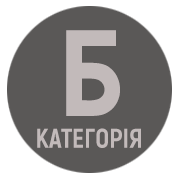Grammatical aspects of scientific and technical translation (on the material of the rescue and emergency work instructions)
DOI:
https://doi.org/10.32782/2617-3921.2024.26.79-87Keywords:
translation, transformations, instructions, grammatical structure, language normsAbstract
Globalization processes have contributed to the intensification of the exchange of scientific knowledge and practical skills in the field of rescue service. This led to increased requirements for translators and set them the task of establishing the process of effective communication between rescue specialists. In modern conditions under martial law, the study of the difficulties that arise during the translation of operational and rescue work instructions is extremely relevant. The purpose of the article is to study the peculiarities of the imperative mood translation in the instructions for rescue and emergency work to eliminate the consequences of chemical, biological and radiological pollution. Achieving the set goal involves performing the following tasks: to collect the illustrative examples of grammatical transformations in the instructions for rescue and emergency work to eliminate the consequences of chemical, biological and radiological pollution in English and Ukrainian translation equivalents; to classify factual material according to the types of translation techniques used by the translator; compare the original text and its translation, carry out a detailed analysis of the applied transformations. The research material is the imperative mood sentences from the texts of the instructions for rescue and emergency work on the elimination of the consequences of chemical, biological and radiological pollution, with a total volume of 59 examples, as well as their translation. In the Ukrainian translation of the instructions for the rescue and emergency work, grammatical transformations are used, which are caused by the difference in the grammatical structure of languages and the principles of language reality actualization. The conducted analysis showed that in the vast majority of cases, in order to achieve adequacy, the Ukrainian translation of rescue and emergency work instructions is carried out using such grammatical transformations as division (44%), sentence combination (11%), replacement (14%), change word order (3%), changing the sequence of parts of a complex sentence (3%), addition (15%), omission (10%).
References
Бик І. С. Теорія і практика перекладу. URL: https://moodle.znu.edu.ua/pluginfile.php/571239/
Карабан В. І. Переклад англійської наукової і технічної літератури. Вінниця : Нова книга, 2008. 576 с.
Коваленко А. Я. Загальний курс науково-технічногоперекладу: [навчальний посібник]. 2001. 290 с.
Практикум з науково-технічного перекладу (англійська мова) : [навч. Посібник] ; упоряд. І. Ю. Гусленко. Харків : Вид-во НУА, 2019. 62 c.
Яровенко Я., Болдирева А. Граматичні трансформації в процесі перекладу. Актуальні питання гуманітарних наук. 2021. Вип. 35, том 6. С. 193–202.
Biber D. Longman Grammar of Spoken and Written English. London: Longman. 2007. 1205 p.
Chemical, Biological, Radiological and Nuclear Hazards. URL: https://www.ifrc.org/sites/default/files/2021-06/20-CBRN-HR.pdf
Health Aspects of Chemical, Biological and Radiological Hazards. Manual. Australian Institute for Disaster Resilience. 2000. 354 p.
Hewings M. Advanced Grammar in Use. Cambridge: Cambridge University Press, 2005. 294 p.
What can you do about biological pollutants? URL: https://jenningsheating.com/what-you-can-do-about-biological-pollutants/



